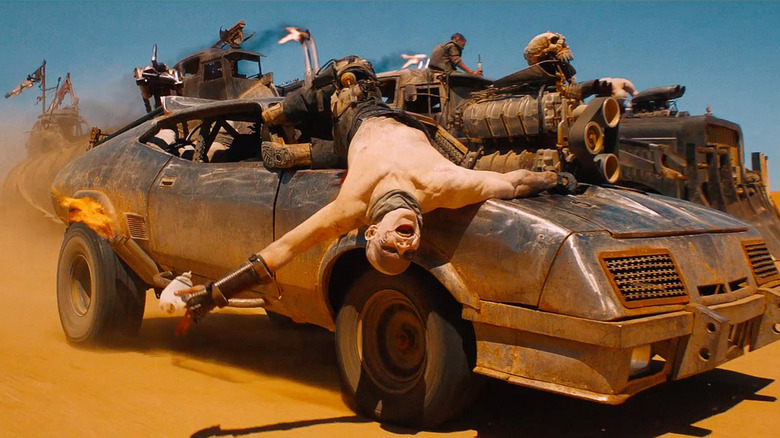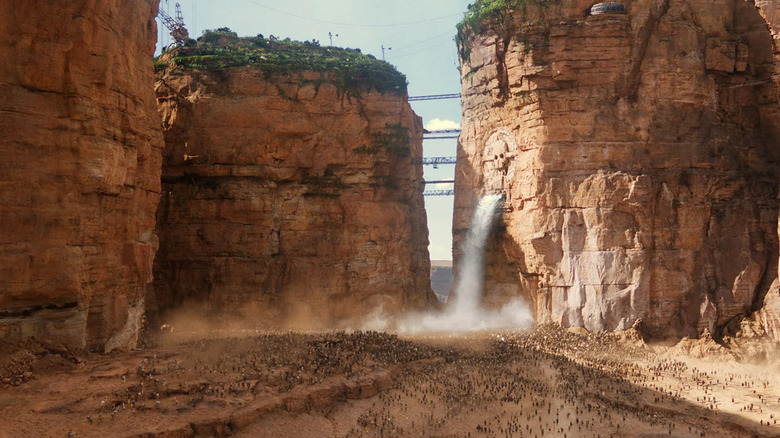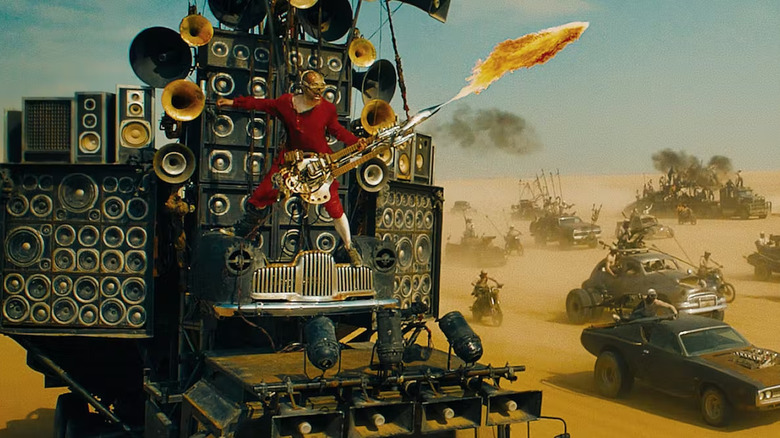Physics Was George Miller's Biggest Limitation While Filming Mad Max: Fury Road
George Miller will likely look up the ante on his "Mad Max" franchise with the upcoming prequel, but it's going to be hard to top its predecessor. "Mad Max: Fury Road" solidified the long-running series in the upper echelon of action films, winning six Academy Awards and garnering high praise from critics and audiences alike. The film is a technical marvel, a prime example of the blending new and old tricks to create a heart-pounding experience that never lets up.
"Mad Max: Fury Road" is already an off-the-walls thrill ride from beginning to end, but according to the film's director, it could have been even crazier if it weren't for the pesky limitations of physics (I, too, hate when that happens). Removing unnecessary details from a film is nothing new; however, Miller had to think long and hard about not pushing the boundaries of logic within the world of "Mad Max." Despite the absolute bats*** stuff the franchise is known for, there were limits even Miller could not justify breaking.
Defying physics
In an interview with Vulture, Miller revealed that during the development process, several concepts had to be abandoned for the sake of practicality. One of which was an expanded version of the Citadel, the stronghold where the movie's big bad Immortan Joe resides.
"There was definitely some concept work that we did that was great to look at on the page, but it just defied physics in some way, or you couldn't really figure out how it got from present day through all the apocalyptic events into a world 50 years hence. For example, initially, some of the early drawings of the Citadel were much more elaborate. It felt much more populated, much more epic, and it just felt like it was there because of our imaginations rather than because you could believe that it could be built."
The madness that inhabits the world of "Mad Max: Fury Road" needs to be grounded in some way. If not, it's far more difficult to create meaningful stakes. By not letting his imagination run wild to the detriment of the film, Miller ensured the post-apocalyptic world felt lived-in. The details count, especially when you already have a lot of other, wilder stuff to play with.
Making sense of madness
The limits to what Miller was willing to inject in his zany post-apocalyptic vision seem initially flimsy when it comes to other parts of "Fury Road." However, there is a method to the madness. A prime example of pushing the limits of realism is the inclusion of the Doof Warrior, a blind, guitar-wielding member of Immortan Joe's army. He plays music for the War Boys during the adrenaline-inducing chase sequences with a flame-throwing guitar. Believe it or not, it makes sense. Miller elaborated:
"The Doof Warrior, I always thought we could get away with him because he was just part of the Immortan's pageantry. And there's definitely a logic to him. There's always been the music of war, whether it's the bugler, the drummer, or the bagpipe player. The Doof Warrior is just the wasteland version of that."
I mean, Miller is right. The crazy antics of the Doof Warrior are not only in line with the world of "Mad Max: Fury Road," but it fits into our reality. Finding those connections to justify the insanity may seem unnecessary in the grand scheme of things. However, the pieces of the puzzle must fall into place to complete the bigger picture. Miller's attention to detail brings life to the unbelievable, and "Fury Road" would not work as well as it does if it didn't.


